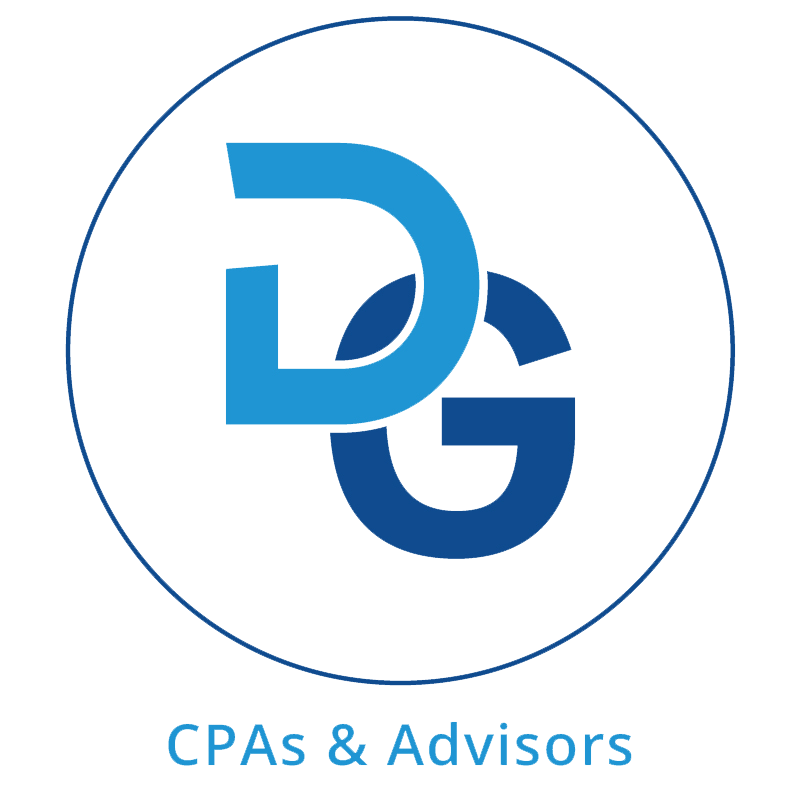Thoughts and Comments on Taxes, Investing, Finances, and a Couple of Life Tips

by Gregory S. Dowell
We make things way too complicated sometimes. In the end, some basic guidelines just don’t change, regardless of what new tags might be created, what Congress might do, or what the market might do. In many cases, we make things appear complicated because of the proprietary language that we use – CPAs are often guilty of this. All professionals in every discipline share guilt in this regard; we develop our own jargon that only WE can understand. Unless we’re talking about rocket science, you generally don’t have to be a rocket scientist to understand at least the basics of most things (and I’m not even convinced about rocket science).
Over the course of many years and as a result of seeing many interesting tax and financial situations (including a few of my own), there are a few truths that seem to consistently emerge about investing, finances, taxes, and life (as understood by a CPA).
Here are a few of those fundamental truths (and some thinly-veiled opinions) that can provide general guidance to individuals of all ages:
- Live below your means, not at or above your means. Living below your means is what generates savings. That is a tried and true approach to building wealth. For more information, read The Millionaire Next Door.
- Taking on debt is acceptable when you are investing in yourself. After honestly assessing your skills, the timing of the venture, the potential other sources of capital, and doing your due diligence, borrowing to start your own business may be a good idea. I call that investing in yourself – assuming you do so wisely and within scale. If you are taking on debt to buy a car, and you need a car to get to work, that is a wise use of debt, assuming it is done within scale (you are buying a Chevy and not a BMW). If you are considering taking on debt to buy a home, and if you have already budgeted for the monthly payments, real estate taxes, insurance, and likely repairs and maintenance, I think that is a good use of debt. If you are considering debt for the purpose of personal consumption, that is not an investment and you should put away the credit card. You may one day reach a level of income where you can be impetuous and, when that happens, enjoy the feeling of spending without worry. Until then, be smart with debt.
- Count on your current income now to build your savings, don’t defer to the future. Don’t use the excuse that you will make more money in the future and THAT’S when you’ll begin saving, rather than now. None of us control the future; one of my favorite sayings is “If you want to make God laugh, tell God your plans”. None of us have any guarantees for the future. You may already be in your max income years, so find a way to save something. If and when those great income years hit, you’ll already have a nest egg and, importantly, savings discipline.
- Step back and think about why you spend so much. Excessive spending is often caused by feelings of envy, inadequacy, or simply because there is access to plenty of credit in our society. If you catch yourself saying “I deserve to have ____”, stop whatever you’re doing immediately. “Deserve” is the word that sets me off. You deserve food, water, love, and shelter. It’s great to buy a bigger house, nicer car, or take and exotic vacation, but do it rationally and because you have planned on it and you can afford to do it, not because you think you deserve it.
- Investment portfolios should reflect your risk tolerances and investment objectives, both of which can change over the course of time. If you are looking to buy a house in the next two years and you need to accumulate savings, don’t invest in the stock market. As you near retirement, calculate the annual amount you will need in retirement and determine if your portfolio can produce that level of income. Protect that income by diversifying between stock and bond holdings. For most investors, the percentage of fixed income investments (like bonds) should increase with age, and the percentage of equities should decrease.
- Keep your ego in check when buying a house. Be cautious of anyone who suggests you buy as much house as you can afford. We have learned the hard way that real estate does not always increase in value.
- Keep an eye on the interest rate on your mortgage and refinance if it’s to your advantage. It is still a solid strategy to pay off your mortgage before retirement.
- Think about how much you spend annually. For many of us, it is important to know how much money we spend during the course of a year. To do this, analyze spending for the past couple of years (much easier if you use a program like Quicken); next, analyze the information and see where you might cut costs. Not everyone needs to live by a budget, but it is a particularly good discipline for those starting on their own, as well as those nearing retirement.
- Don’t become a news headline as someone who was a victim of investment fraud. Invest your money with reputable advisors and companies. Accept the fact that you will not get rich overnight. If an investment return sounds too good to be true, it is.
- Never give out personal information (especially social security numbers) over the phone or email unless you have positively confirmed the source of the request. The bad guys out there are clever and resourceful.
- The IRS will not contact you by email and will not call your home phone number. The IRS will always mail a notice to you. For those reasons, never respond to an email that claims to be from the IRS and do not take those phone calls from people who claim to be from the IRS.
- Give of your time and/or your resources to charity. In almost all cases, try to reserve some of your budget for charitable giving. Find a cause that is important to you, and then do what you can to move the needle of society forward. You will help your fellow planet dweller, and studies show that you will live longer and be much happier.
- Talk to your kids about money – at every age. When they are young, help them to understand basic finances. As they age, help them to understand how to save. Don’t be afraid to talk to your adult children about their savings habits and spending habits; you don’t have to be a nag, but you certainly have the right to weigh in. As YOU age, help them to understand about your finances.
- Get a will. No excuses – go do it today. This includes health care power of attorney and durable power of attorney designations, and might also include creating trusts.
- Start saving. No excuses – do it today.
- Exercise and be thoughtful about what you eat – it will directly impact your career, your finances, and your relationships over the long haul. Oh, yeah, you will be happier as well.
- An investment priority should always be the retirement plan at work. Aim to invest at least enough to get all the matching dollars offered by the employer.
- Saving for a child’s education is important, but make sure you save for your retirement first. Your child can always get a loan to go to school, but you will have a difficult time getting a loan to fund retirement.
- Help your child to consider and compare all educational options – technical school, public, private, and community college – when it comes time to consider life after high school. College may not be the best choice for your child – a better solution might be to get a certificate in a technical field that holds the prospect of earning a wage that can help support a family (I happen to know several millionaire mechanics and plumbers). If college is the best option, help your child to understand that there rarely is only one “perfect” school for her or him. Run the numbers for the various options – too little thought is given to the overall opportunity cost of education.
- Budgeting and investment process and priorities look a lot like this: 1) understand your spending and determine how much money you can set aside each month; 2) build an emergency reserve of cash, large enough to cover expenses for three months; 3) insure all of your basic life and disability needs (no more than is necessary at this point); 4) determine if you are interested in buying a house or condo; 5) fund every retirement plan offered to you at work; 6) build a portfolio of mutual funds outside of your retirement plan.
- If you have children that are still in school or if you have a considerable amount of debt from mortgages, credit cards, or education loans (including co-signer debt), you probably need to have life insurance.
- You need to be very convinced that you shouldn’t buy term life insurance rather than whole life, and invest the difference.
- Health insurance is a must for everyone. The spending priority for disability insurance is right behind health insurance. Consider buying long term care insurance when you are in your 50’s, especially if your portfolio is worth less than $2.5 million.
- Once you know that your portfolio is large enough to take care of all of your investment needs, consider making gifts to your children; in 2017 you can give up to $14,000 per year to an individual; if married, your spouse can also give $14,000 to the same individual. This limit will be increased to $15,000 in 2018.
- Look at your bank statements every month. It’s great if you actually reconcile them but, if not, spend the time to at least look at the activity and make sure you understand it. It is amazing how much fraud and how many errors would be caught if we just acted like good consumers.
- Look at your brokerage statements every month. Same thing as the above – make sure you understand the big picture about what’s going on.
- Even if you think you are not financially savvy, force yourself to read at least one business or investment publication a month, or read the daily business section of your favorite paper, or log on to your favorite business website or podcast. Doing this at least a few minutes daily will make you more comfortable with the subject matter and vocabulary and the financial world will seem a lot less intimidating. Do not, however, become so obsessed that you watch cable business shows for entertainment (see immediately below).
- Don’t overdo the above – also read novels, biographies, play the piano, sing, dance, paint – whatever gets your creative juices going. You’ll be happier, your career will improve, and you’ll be richer in so many ways.
- Put down the remote control or that smartphone and hang out with real people. You’ll live longer, you will have more income, and you will risk making a difference in someone’s life.
- The rain falls without discrimination on the good and the bad, and so does the sunshine. Waste as little time as possible feeling sorry for yourself, and the same goes with feeling jealousy. Both behaviors are debilitating in the long run and will inhibit your financial and emotional recovery.
- If you have been fortunate to have a long marriage, make sure your spouse understands how your finances and taxes work. Consider introducing a CPA to him or her, if you don’t have one already. Make a list of your assets and put it in the safe deposit box – and make sure you review this list with your spouse every year or when a major change occurs. Show your spouse what information goes into your tax return. If you are not married, confide in one of your children or a professional advisor who will put your interests first.
- If you are the spouse with limited knowledge of household finances and taxes, immediately take an active interest in both. You don’t need to become an expert, but understand the big picture, the key advisors, and where the assets are held. Even if you think things are going swimmingly at home, do this. I’ve seen enough sudden deaths and failed marriages to last a lifetime.
- Mutual funds are the way to go for most investors. They are not as much fun as buying individual stocks and bonds, but they make the most sense. Once you have built up a reasonable reserve of assets in mutual funds, THEN you can consider buying some stocks or bonds with a small allocation of your portfolio. Your default should be to invest in mutual funds that carry no load; there needs to be a really good reason to buy funds with a load. Better yet, buy the market by investing in funds or ETFs that mirror broad indexes, such as the S&P 500 or the NASDAQ.
- Do business with people you know and like. You’ll be more likely to call them and ask questions. Regardless of your friendship, hold them accountable to a reasonable standard, but don’t abuse your friendship.
- Your CPA, attorney, insurance agent, investment advisor, and your banker are professionals who should be with you for the long haul. Invest wisely in all of them.
- Honestly assess your own investment skills and desire. Managing your own investments is great for some people who have the time, skills, temperament, and talent, but others do much better (and sleep much better) if they use a professional investment manager.
- Lasting investment returns are rarely made in the short run. While you still need to check your portfolio from time to time, you should invest for the long haul.
- Be willing to commit yourself to putting your full effort into your career. Sorry to pop the bubble, but the odds are incredibly stacked against getting rich quickly. I had a finance professor back in undergrad who told me (imagine a southern drawl, as he was from Atlanta originally), “Mr. Dowell, the harder you work, the luckier you get.” He only said it to me just that one time, but it made an impression that has lasted a lifetime.










